Mark-making is the precursor to early writing. Research tells us that children need to develop balance, coordination, and fine motor skills (to name a few!) before they can sit down and write, so it is vital we offer a range of early mark-making opportunities to our children.
Making marks is a part of who we are. From writing shopping lists to leaving footprints behind – we are all making our mark! But if mark-making is so important in the early years, how can we make it fun?
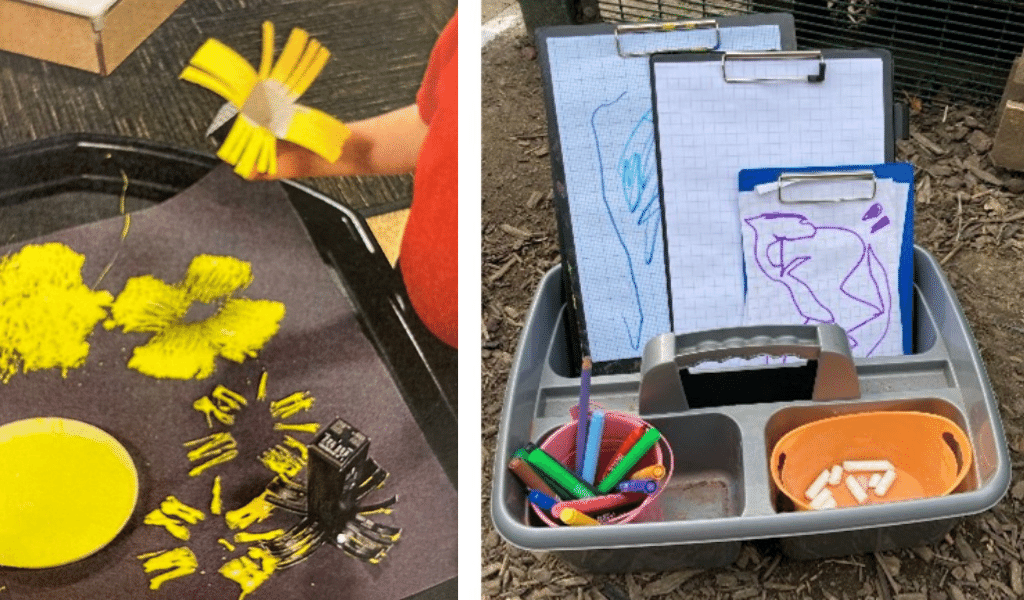
Children need a reason to make marks, so it is important we follow their interests and offer fun and engaging activities to grab their attention. Here are my five top tips to help you encourage children to make marks
Most children love to get messy and use their hands. Why not get stuck right in? Making patterns in sand or swirling in shaving foam allows for engaging vocabulary too, like ‘squishy’, ‘slimy’ and ‘soft’. Add biodegradable glitter, paint, or sequins for that additional bling! I sometimes introduce laminated cards of the ‘Beery pre-writing shapes’ to help my pre-school children begin to form shapes, ready for reception.
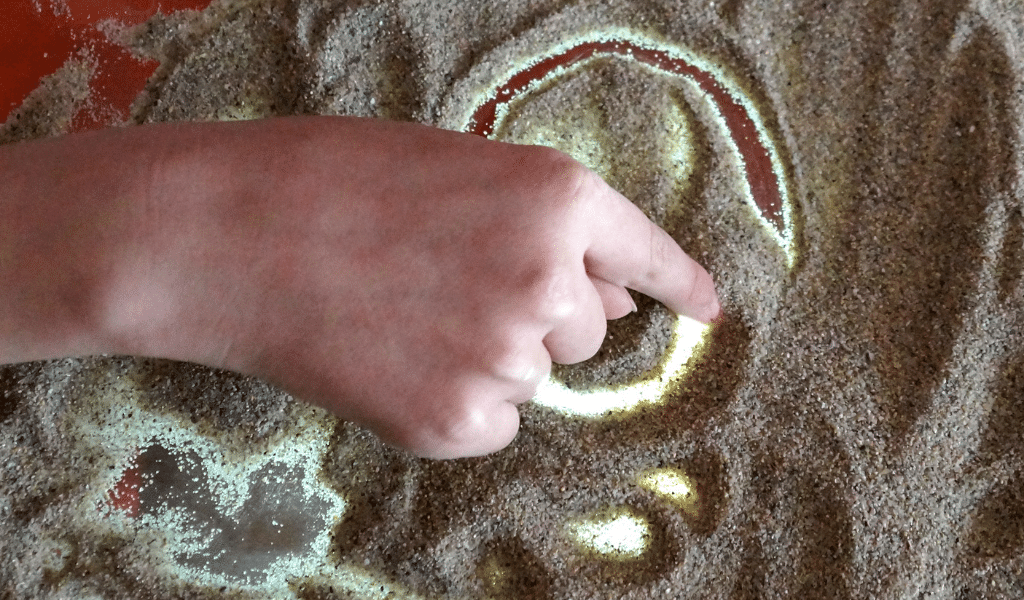
Finger painting is also really effective: try painting directly on silver foil for a more glamourous effect or squeezing play dough for extra fun!
Toys are a great way to encourage even the most reluctant mark-maker. We often print with the feet of dinosaurs or roll the wheels of a train across a large sheet of paper (wallpaper lining is great for this!). We have even dipped string and spaghetti into paint, then dropped it into a tuff tray to experiment with pattern. Try attaching a felt pen to the back of a chunky car for mark-making fun on wheels. The list is endless!
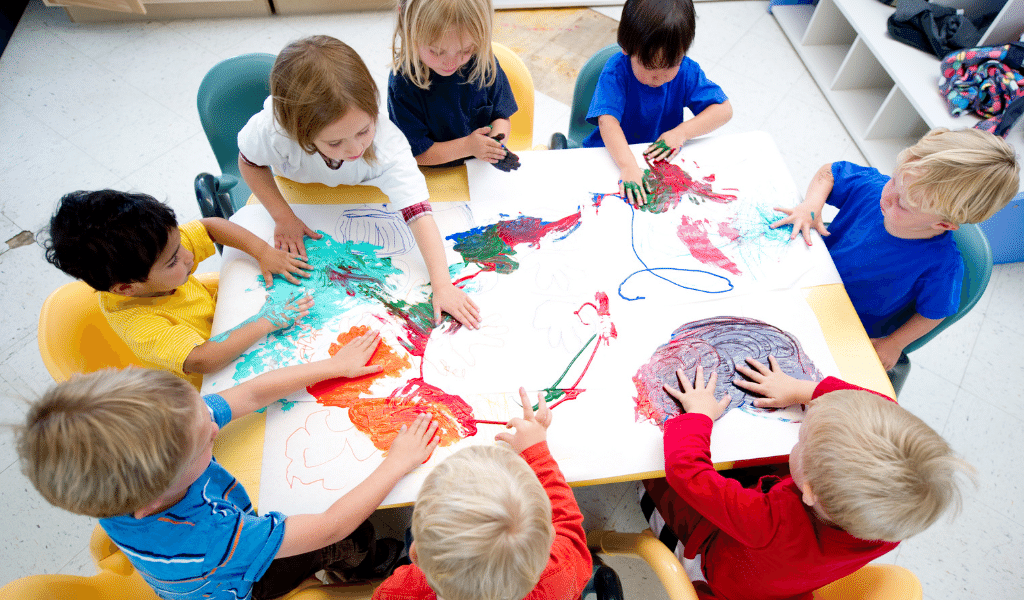
Tools are the traditional way to mark-make – but why not think outside the box? Use nature and the environment as your inspiration, and you will have children making marks in no time. You could try painting with vegetables, scraping coloured sand and rice with scrunched up foil or rolling paint with textured rollers. Think of painting trees with water and using sticks or forks to create painted and printed masterpieces!

This involves a different form of mark-making and will help children develop their understanding of more abstract concepts, such as counting claps they cannot see. Introduce words like ‘twirling’, ‘swirling’ and ‘following’ as you dance to music or follow the ribbons as they mark the air. This is a great introduction to ‘Write Dance’ and a wonderful way to practise our gross motor skills, whilst crossing the mid-line. Try adding lengths of string and masking tape to your creative table to make patterns and marks in more static ways. You could even attach a tail to a simple kite to explore outdoor movement further.

At the mark-making table is the usual answer. But should it be that predictable? Surely, early years should be our excuse (and reason!) to bring the wild and wacky into our everyday? Making marks in muddy puddles, wet sand, and on stone flags are a must. Children love to experiment by making marks using twigs and thick brushes – so why not paint onto bed sheets outside, or onto cling film wrapped around tuff tray legs?

Cardboard boxes and rolls of paper are a wonderful resource, as are large, cheap sheets of Perspex which can be cable-tied to the fence. Buying a pot of chalk paint is also great investment – I have lost count of how many surfaces I have painted ready for marks. Providing little caddies and writing bags in which to pop clip boards and writing materials is a great idea for mark-making on the move!
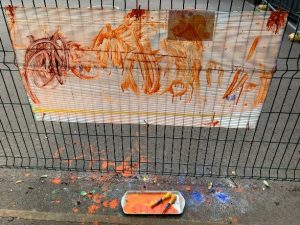
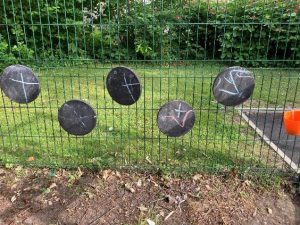
Whatever you do, remember those early marks are vitally important for each child’s learning and development. But most importantly, have fun!

Katherine Bate trained as a primary school teacher and after many years in reception class, is currently working as an EYFS nursery teacher. Katherine also works as an Expert Teacher on the DfE Early Years Recovery Project and has previously worked as a Specialist Dyslexia teacher for the British Dyslexia Association, Dyslexia Action and the DfE on the pilot ‘Sound Check Project’.